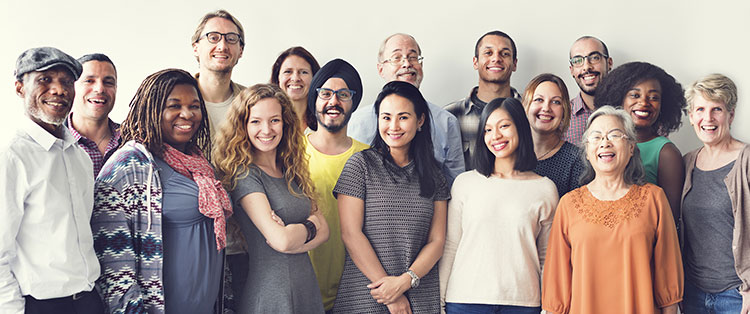What's The Difference Between Diversity And Inclusion?
 By Tom Stroud on 19.02.2021
By Tom Stroud on 19.02.2021 Diversity and inclusion are two words that more often than not go hand in hand, and rarely do those of us within HR think of one without the other. But what does each signify, and how do we perceive the crucial differences between the two?
Why is diversity and inclusion (D&I) important?
The compelling case for improving D&I has gradually built up, mainly spurred on by social injustice. What's more, companies are starting to recognise it as a source of competitive advantage. Recent research has shown that organisations with the highest ethnic diversity are more creative, productive, and higher performing than their competitors, so it's more important than ever those businesses examine both diversity & inclusion, within their people management policies and procedures.
What do we mean by diversity?
Look up the meaning of 'diverse' in the dictionary, and you'll see it defined as "very different from each other, and of various kinds." Within the workplace, it represents precisely that; usually, capable people who don't share either the same gender, age, ethnicity, social background or even the same education.
A diverse workforce requires the organisation to recognise these differences and acknowledge the indisputable advantage of having this range of perspectives, and that the workforce is often a reflection of the customer base they serve.
Consequently, if we acknowledge that diversity is first and foremost about recognising each other's differences, about the who and the what, before the how, then what exactly are those differences and how important are they?
In the past diversity was often thought of as merely an organisational issue of either gender, race or sexual orientation, but today we see the term evolve into something much broader. Forward-thinking companies are now working to build a workforce that includes a wide range of human experience representing different ages, cultures, skills, general life experience and even mindsets. These more diverse companies are better positioned to attract top talent, improve employee satisfaction, decision making, and most importantly market orientation, all of which feeds into a beneficial cycle of increasing returns.
Boardroom representation in the future will need to go much further than merely looking at how many women have a seat at the table. For those companies that spend time building a diverse workforce, the whole business stands to benefit if the broad range of ideas, thoughts and ways of working that those people will naturally bring are welcomed and given merit.
Consequently, if a diverse business is made up of lots of different types of people from various backgrounds and experiences, and they are properly represented throughout the company at all levels, how do they ensure they are also inclusive?
Inclusion is not the same
Although diversity and inclusion are often used synonymously, if we look again at its dictionary definition, inclusivity is correctly defined in its simplest terms as "including everyone", and again within the workplace, it should be precisely that. A genuinely inclusive workplace offers a culture and environment that provides everyone with an equal chance to participate.
Inclusion is about how a company actively includes its diverse workforce. If that doesn't happen, they run the risk of alienating different individuals and creating an atmosphere which, unintentionally, causes stress. All human beings need to experience a sense of belonging to thrive, and we do well if we feel secure and understood.
At work, this translates into being our authentic selves, being part of an inclusive culture in which every person feels they are listened to and that they belong without needing to conform or leaving their real personalities at home to succeed. The fulfilling of fair policies and procedures allow a diverse business to support their staff and help them reach their full potential no matter their circumstances or background.
We're all aware that diversity and inclusion are intrinsically linked, and despite being consistently referred to as a 'package', they are dependant on each other and don't work exclusively. Inclusion is a conscious effort made to support diversity. Or, in other words, if diversity invites you to the party, then inclusion makes sure you genuinely enjoy it and want to stay.



Have Your Say